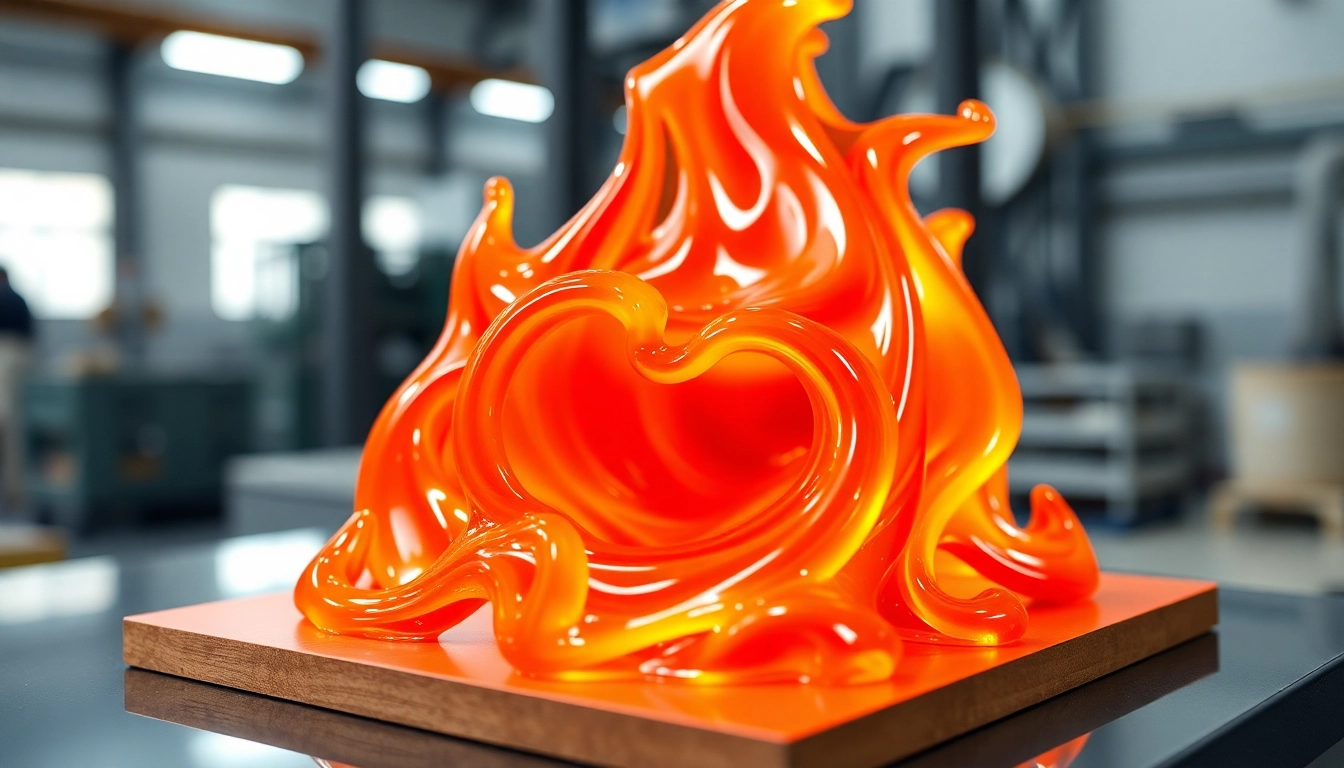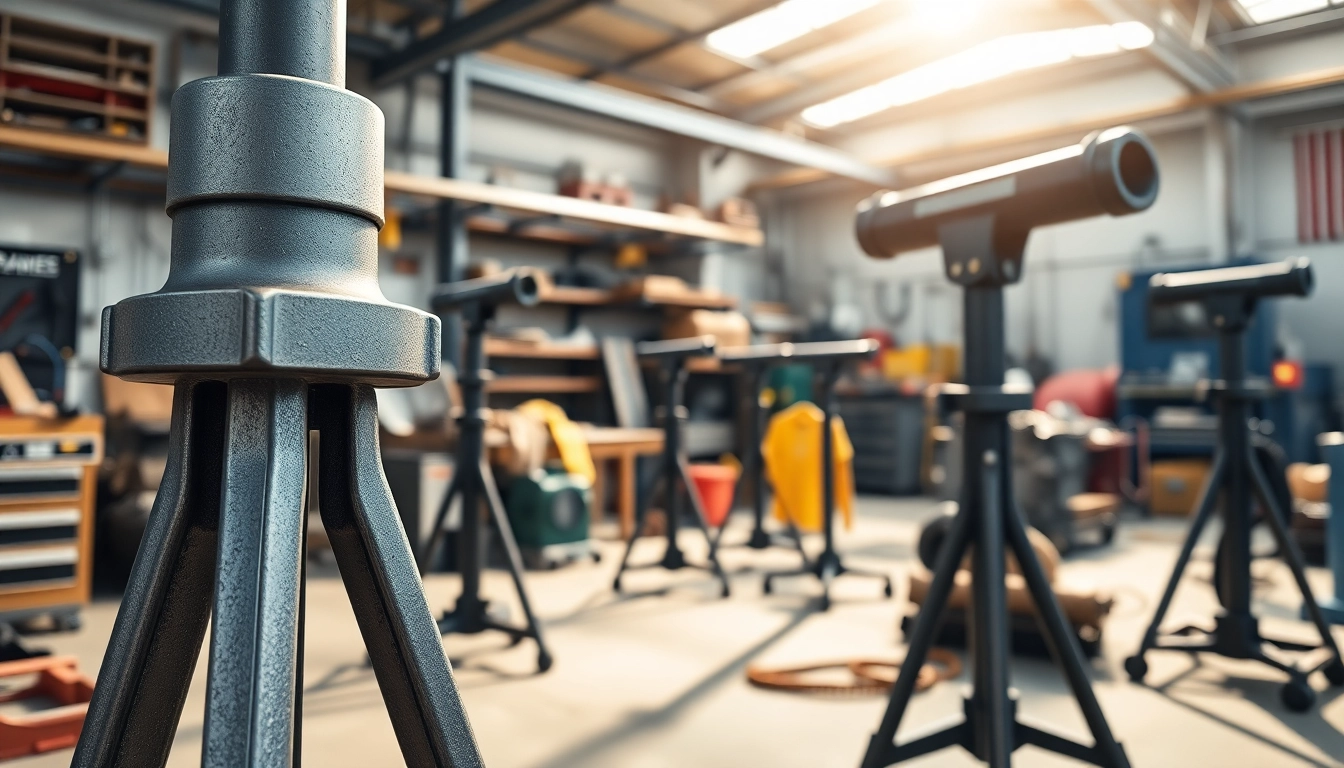Understanding Blow Molding Technology
What is Blow Molding?
Blow molding is a manufacturing process primarily used for producing hollow plastic parts. The technique involves inflating a heated plastic tube (parison) within a mold, allowing it to take on the shape of the mold cavity. This versatile method is widely adopted across various industries, thanks to its ability to produce items in high volumes efficiently.
Types of Blow Molding Processes
There are three main types of blow molding processes — extrusion blow molding (EBM), injection blow molding (IBM), and stretch blow molding. Each type serves specific purposes and industries, and understanding their differences is crucial for manufacturers looking to choose the right method for their production needs.
- Extrusion Blow Molding (EBM): In this process, melted plastic is extruded into a parison that is then molded into shape through air pressure. It’s mainly used for producing containers like bottles, tanks, and other hollow parts.
- Injection Blow Molding (IBM): This method combines injection molding and blow molding techniques. The process begins with the injection of a plastic preform that is then inflated. IBM is commonly used for more complex shapes and is favorable for producing high-quality bottles or containers with specific dimensions.
- Stretch Blow Molding: This technique is a variation of injection blow molding that stretches the preform before blowing. It is highly efficient in producing strong plastic containers suitable for carbonated beverages and cosmetics.
Applications of Blow Molding in Industry
Blow molding is pivotal in several industries due to its flexibility and efficiency in manufacturing. Key applications include:
- Packaging Industry: This is the largest sector, with blow molding used to produce bottles, jars, and containers for beverages, food products, and household products.
- Automotive Industry: Various components, such as fuel tanks, bumpers, and interior parts, are produced using blow molding thanks to its ability to create lightweight and durable parts.
- Consumer Goods: Toys, household items, and other consumer products benefit from the vast design capabilities offered by blow molding technologies.
Key Players in the Blow Molding Machine Market
Top Blow Molding Machine Manufacturers in the USA
The U.S. market for blow molding machines is populated by several key manufacturers. Notable players include:
- Uniloy: Known for their diverse blow molding technologies, Uniloy stands out as a global leader, offering innovative solutions for plastic manufacturing.
- Wilmington Machinery: A leader in high-speed monolayer and multilayer blow molding machines, Wilmington Machinery is recognized for their efficiency and productivity.
- Jomar Corporation: With a significant market presence for over 50 years, Jomar specializes in injection blow molding machines.
- Bekum Maschinenfabrik: A prominent manufacturer known for their high-quality H-series blow molding machines in North America.
- Demark: They focus on rotary blow molding machines and are known for their customization capabilities.
Compare Features and Technologies
When choosing a blow molding machine, comparing different features and technologies is vital. Some key factors include:
- Production Speed: The speed at which the machine operates is critical for meeting production demands. High-speed machines can significantly reduce bottlenecks in manufacturing processes.
- Energy Efficiency: With energy costs contributing significantly to overall production costs, selecting machines that offer energy-efficient operations can lead to cost savings.
- Automation: Advanced automation features can improve precision, reduce scrap rates, and lower labor costs while enhancing safety in operations.
Market Trends and Innovations
The blow molding machine market is evolving rapidly, with several emerging trends and innovations influencing manufacturer decisions:
- Automation and Industry 4.0: The integration of IoT and AI in manufacturing processes is streamlining operations. Smart machines allow real-time monitoring and analytics, enhancing production efficiency.
- Eco-friendly Solutions: As sustainability becomes a priority, manufacturers are investing in technologies that reduce waste and energy consumption, including machines designed for bio-based materials.
- Customization: With the growing demand for personalized products, blow molding manufacturers are focusing on producing machines that can easily adapt to unique customer specifications.
Choosing the Right Blow Molding Machine
Factors to Consider When Selecting a Manufacturer
Choosing the right blow molding machine manufacturer requires careful consideration of several factors:
- Experience and Reputation: A manufacturer’s industry experience and reputation can provide insights into product quality and reliability.
- Technical Support: Selecting a manufacturer that offers robust technical support and after-sales service can significantly impact smooth operations.
- Customization Capabilities: Effective suppliers should be able to customize machines according to specific production needs and material requirements.
Evaluating Cost vs. Quality
While cost is a significant factor in purchasing decisions, quality should not be compromised. Evaluating vendors requires:
- Understanding Total Cost of Ownership: This includes machine purchase price, maintenance costs, and operation expenses over its lifecycle.
- Investing in Quality Components: Higher-quality machine components may yield superior performance and longer service life, translating to lower downtime and repair costs.
- Analyzing Resale Potential: Machines from reputable manufacturers tend to hold their value better, which is a critical consideration for future investments.
Future-Proofing Your Production with Advanced Machines
To remain competitive in a rapidly evolving market, manufacturers must consider future-proofing their operations:
- Investing in Flexible Machinery: Machines that can adapt to various product types and sizes will be increasingly beneficial in meeting changing market demands.
- Embracing Innovations: Staying informed about the latest technologies and trends can provide strategic advantages in production and product offerings.
- Training and Development: Ensuring team members are trained on new technologies can enhance productivity and operational efficiency.
Maintenance and Care for Blow Molding Machines
Essential Maintenance Practices
Regular maintenance of blow molding machines is crucial for ensuring longevity and productive efficiency. Essential practices include:
- Routine Inspections: Scheduled inspections can identify wear and tear before it leads to significant issues.
- Lubrication: Regular lubrication of moving parts is essential to reduce friction and prevent breakdowns.
- Calibration: Ensuring machines are correctly calibrated can significantly boost production accuracy and quality.
Common Issues and Troubleshooting
Despite regular maintenance, issues may still arise. Common problems include:
- Mold Leakage: Can occur due to wear or improper sealing. Solutions involve inspecting and replacing worn gaskets.
- Inconsistent Product Quality: This may indicate misalignment in the blow molding process. Regular calibration and operator training are crucial.
- Machine Downtime: Frequent downtime can indicate the need for better maintenance schedules or updates on older equipment.
The Importance of Regular Servicing
Regular servicing by qualified technicians ensures optimal machine performance. It can lead to:
- Increased Lifespan: Consistent care extends the life of equipment, leading to better returns on investment.
- Enhanced Productivity: Machines running at their best capabilities improve overall production by reducing delays and defects.
- Safety Compliance: Regular servicing helps meet industry safety standards, protecting operators and reducing liability.
Case Studies and Success Stories
Successful Implementations of Blow Molding Machines
Case studies provide valuable insights into successful blow molding implementations. For instance, a specific beverage company partnered with a leading Blow Molding Machine Manufacturer to redesign their production lines, allowing for increased output and reduced waste by adopting EBM technology.
Interviews with Industry Experts
Industry experts frequently share their insights on the evolution and future of blow molding. For instance, one expert noted that advancements in AI and real-time data analytics are reshaping the landscape, allowing for more tailored and efficient production methods.
Lessons Learned from Leading Manufacturers
Leading manufacturers emphasize several lessons learned over the years:
- Embrace Change: Adaptability to new technologies can significantly enhance production capabilities.
- Invest in Training: Well-trained staff can quickly adapt to technological changes and optimize production processes.
- Sustainability Matters: Eco-friendly practices not only enhance brand image but also meet growing market demands for green products.



